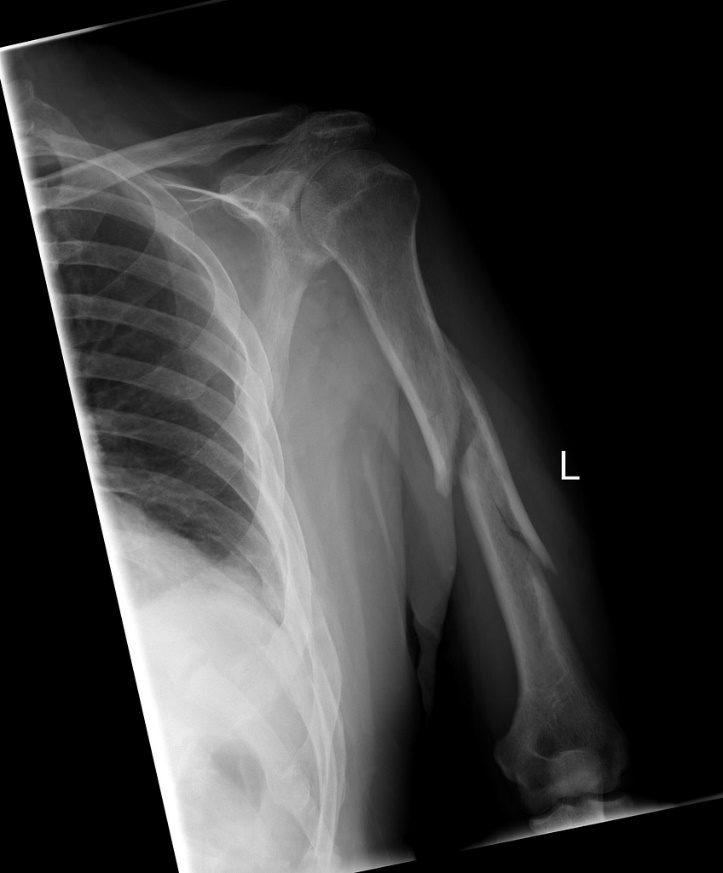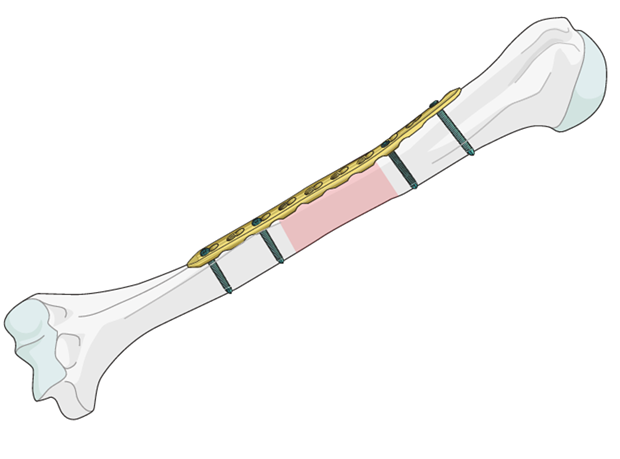Introduction
Fractures of the humeral shaft, the long bone in the upper arm, can occur due to various reasons such as trauma, accidents, or sports injuries. These fractures can significantly impact a person's daily life, causing pain, limited mobility, and prolonged healing periods. Over the years, orthopedic medicine has seen advancements in the treatment of such fractures, with one notable innovation being the humeral shaft locking plate.
In this article, we will explore the benefits and functionality of the humeral shaft locking plate as a modern approach to fracture management. We will delve into its advantages over traditional treatment methods, the surgical procedure, and postoperative care. Moreover, we will address common patient concerns and discuss the future prospects of fracture management.
Understanding Humeral Shaft Fractures
Humeral shaft fractures involve the midsection of the humerus bone, which connects the shoulder joint to the elbow joint. These fractures can range from simple to complex, depending on the severity of the injury. Patients may experience pain, swelling, bruising, and difficulty in moving the arm after such fractures.

Traditional Treatment Methods
In the past, humeral shaft fractures were typically managed using conservative methods, such as immobilization with casts or splints. While these approaches allowed the bone to heal, they often resulted in prolonged recovery periods and limited functionality.

External fixation, which involves securing the bone using pins outside the body, was another treatment option. While it offered stability, it had drawbacks like pin tract infections and restricted joint movement.
Intramedullary nailing, where a metal rod is inserted into the medullary canal of the bone, also gained popularity. Although it provided better stability, it was not always suitable for complex fractures.
Limitations of Traditional Treatments
Traditional treatment methods were associated with certain limitations. Prolonged immobilization could lead to joint stiffness and muscle atrophy. External fixation and intramedullary nailing were not always feasible, especially in cases of comminuted fractures.
In search of a better solution, the orthopedic community turned to the concept of locking plate fixation.
Introducing the Humeral Shaft Locking Plate
The humeral shaft locking plate is an implant designed to provide stable fixation for humeral fractures. It is constructed with a locking mechanism that securely holds screws in place, ensuring better bone-to-plate interface and enhanced stability during the healing process.

How Does it Work?
During the surgical procedure, the orthopedic surgeon carefully aligns the fractured bone fragments and secures the locking plate over the fracture site. Specialized screws are inserted through the plate and into the bone, creating a rigid construct that allows early movement and faster healing.
Advantages of Locking Plate Fixation
The humeral shaft locking plate offers several advantages over traditional treatment methods. These include:
Enhanced Stability: The locking mechanism prevents screw loosening, reducing the risk of implant failure and providing better stability during the healing process.
Early Mobilization: Unlike conservative methods, locking plate fixation allows for early movement, reducing the chances of joint stiffness and promoting faster recovery.
Versatility: The locking plate can be used for various fracture patterns, making it a versatile option for orthopedic surgeons.
Improved Clinical Outcomes: Studies have shown that locking plate fixation results in better clinical outcomes and patient satisfaction.
Surgical Procedure and Recovery
The surgical procedure for humeral shaft locking plate fixation is performed under general anesthesia. After making an incision, the surgeon exposes the fracture site and aligns the bone fragments. The locking plate is then placed and fixed using screws. Once the plate is in place, the incision is closed, and the arm is placed in a sling.
Recovery after locking plate surgery involves a carefully planned rehabilitation program. Physical therapy is initiated early to improve range of motion and strengthen the arm. Over time, patients can gradually resume their daily activities.
Postoperative Care and Rehabilitation
Following the surgery, patients must adhere to their surgeon's instructions to ensure proper healing. The arm should be kept elevated, and movements that put stress on the healing bone should be avoided. Regular follow-up visits are essential for monitoring progress and making any necessary adjustments to the rehabilitation plan.
Case Studies and Clinical Results
Numerous case studies have shown promising results with humeral shaft locking plate fixation. Patients have reported reduced pain, improved function, and faster return to work and daily activities. Moreover, the rate of complications with locking plate fixation is relatively low.
Comparison with Other Treatment Options
Locking Plate vs. Intramedullary Nailing
While both locking plate fixation and intramedullary nailing provide stable fixation, locking plates offer the advantage of preserving the periosteal blood supply and biological osteosynthesis. This can lead to better healing outcomes, especially in open fractures.
Locking Plate vs. Traditional Plating
Locking plate fixation has gained popularity over traditional plating due to its superior stability and early mobilization advantages. Traditional plates rely on compression between the bone and plate, which can lead to implant failure in osteoporotic bones.
Complications and Risk Factors
As with any surgical procedure, humeral shaft locking plate fixation carries some risks. These may include infection, nerve injury, nonunion, and implant-related complications. However, the overall complication rate remains low, and most patients experience a successful recovery.
Addressing Patient Concerns
Does Locking Plate Fixation Require Removal?
Locking plates are designed to be load-bearing and can remain in the body indefinitely. In some cases, they may be removed if causing discomfort or if the surgeon deems it necessary.
How Long Does Recovery Take?
Recovery time varies from patient to patient, but many individuals can expect substantial improvement within the first few months. Full recovery may take several months to a year.
Can Anyone Undergo This Surgery?
Most patients with humeral shaft fractures are candidates for locking plate fixation. However, individual medical conditions and fracture patterns will be considered by the surgeon before recommending this approach.
Expert Recommendations
Ideal Candidates for Locking Plate Fixation
Locking plate fixation is recommended for patients with humeral shaft fractures, especially those with complex or comminuted fractures. It is also suitable for patients who desire early mobilization and swift recovery.
Surgeon's Perspective on Locking Plate Surgery
Orthopedic surgeons often favor locking plate fixation due to its excellent clinical outcomes and versatility. The procedure's low complication rate and the ability to cater to various fracture patterns make it an attractive option for surgeons.
Future Developments in Fracture Management
The field of orthopedics is continually evolving, and there are ongoing efforts to further improve fracture management techniques. Researchers are exploring advanced materials and innovative implant designs to enhance stability and accelerate healing.
Conclusion
The humeral shaft locking plate represents a significant advancement in the treatment of humeral shaft fractures. Its locking mechanism provides enhanced stability and early mobilization, leading to improved clinical outcomes and patient satisfaction. While traditional treatment methods have their place, locking plate fixation offers a modern approach that brings better results and faster recovery for patients.
Frequently Asked Questions (FAQs)
Can locking plate fixation be used for other bones besides the humerus?
Is locking plate surgery suitable for pediatric patients?
What is the success rate of locking plate fixation?
Are there any non-surgical alternatives for humeral shaft fractures?
Can the locking plate be customized for individual patients?
How to Buy Orthopaedic Implants and Orthopaedic Instruments?
For CZMEDITECH, we have a very complete product line of orthopedic surgery implants and corresponding instruments, the products including spine implants, intramedullary nails, trauma plate, locking plate, cranial-maxillofacial, prosthesis, power tools, external fixators, arthroscopy, veterinary care and their supporting instrument sets.
In addition, we are committed to continuously developing new products and expanding product lines, so as to meet the surgical needs of more doctors and patients, and also make our company more competitive in the whole global orthopedic implants and instruments industry.
We export worldwide, so you can contact us at email address song@orthopedic-china.com for a free quote, or send a message on WhatsApp for a quick response +86-18112515727.
If want to know more information,click CZMEDITECH to find more details.
English
Français
Русский
Español
العربية
Português
Deutsch
italiano
日本語
한국어
Nederlands
Tiếng Việt
ไทย
Polski
Türkçe
አማርኛ
ພາສາລາວ
ភាសាខ្មែរ
Bahasa Melayu
ဗမာစာ
தமிழ்
Filipino
Bahasa Indonesia
magyar
Română
Čeština
Монгол
қазақ
Српски
हिन्दी
فارسی
Kiswahili
Slovenčina
Slovenščina
Norsk
Svenska
українська
Ελληνικά
Suomi
Հայերեն
עברית
Latine
Dansk
اردو
Shqip
বাংলা
Hrvatski
Afrikaans
Gaeilge
Eesti keel
Māori
नेपाली
Oʻzbekcha
latviešu
অসমীয়া
Aymara
Azərbaycan dili
Bamanankan
Euskara
Беларуская мова
भोजपुरी
Bosanski
Български
Català
Cebuano
Corsu
ދިވެހި
डोग्रिड ने दी
Esperanto
Eʋegbe
Frysk
Galego
ქართული
guarani
ગુજરાતી
Kreyòl ayisyen
Hausa
ʻŌlelo Hawaiʻi
Hmoob
íslenska
Igbo
Ilocano
Basa Jawa
ಕನ್ನಡ
Kinyarwanda
गोंगेन हें नांव
Krio we dɛn kɔl Krio
Kurdî
Kurdî
Кыргызча
Lingala
Lietuvių
Oluganda
Lëtzebuergesch
Македонски
मैथिली
Malagasy
മലയാളം
Malti
मराठी
ꯃꯦꯇꯥꯏ (ꯃꯅꯤꯄꯨꯔꯤ) ꯴.
Mizo tawng
Chichewa
ଓଡ଼ିଆ
Afaan Oromoo
پښتو
ਪੰਜਾਬੀ
Runasimi
Gagana Samoa
संस्कृत
Gaelo Albannach
Sepeti
Sesotho
chiShona
سنڌي
Soomaali
Basa Sunda
Wikang Tagalog
Тоҷикӣ
Татарча
తెలుగు
ትግንያውያን
Xitsonga
Türkmençe
संस्कृत
ئۇيغۇرچە
Cymraeg
isiXhosa
ייִדיש
Yorùbá
isiZulu













